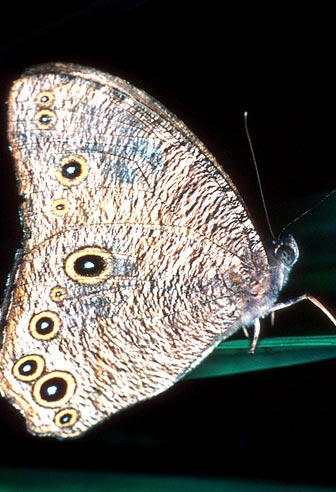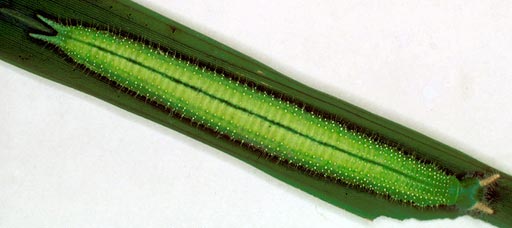Greenhorned caterpillar
Two species of greenhorned caterpillar infest rice; these are the Melanitis leda ismene Cramer and Mycalesis sp.
What it does

Larvae of green horned caterpillars feed on leaf margins and leaf blades. The feeding damage causes removal of leaf tissues and veins.
Why and where it occurs
The larvae feed on alternate hosts that may also support their continuous development in the field.
The two species are found in all rice environments. They are most common in rainfed areas.
The adults are not attracted to light traps. The larvae blend easily with the rice foliage because of their color. Pupation occurs on the leaves and the pupa is a chrysalis suspended from leaves.
How to identify
Check for presence of alternate hosts and natural enemies.
Check for presence of insects:
- shiny and spherical pearl-like eggs
- yellow green larva with body covered by small and yellow bead-like hairs
Check for feeding damage on leaf margins and leaf tips.
Similar damage symptoms can be caused by rice skipper and green semilooper. To confirm green horned caterpillar damage, check for insect pest feeding on rice foliage.
Why is it important
Greenhorned caterpillars are minor pests of rice. Their potential severity is generally too low to cause yield loss. Natural enemies usually control their populations and the plant can recover from the feeding damage of greenhorned caterpillars.
How to manage
- Attract biological control agents.
Natural biological control agents often keep the larval population under control. For example, the eggs are parasitized by trichogrammatid wasps. Chalcid wasp and two species of tachinid flies parasitize the larvae and a vespid wasp preys on the larvae.









